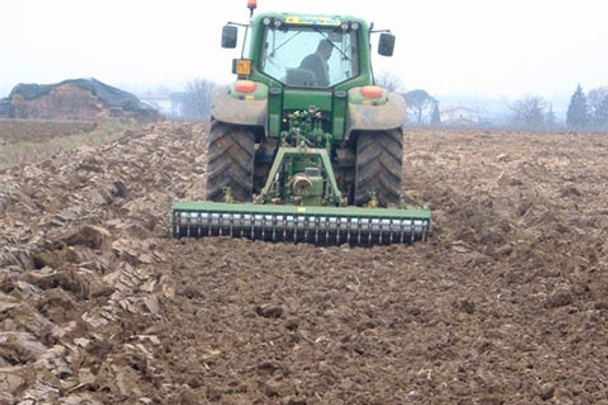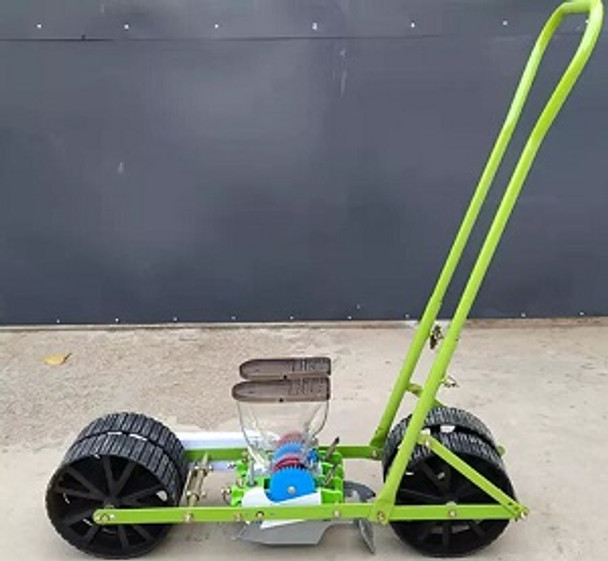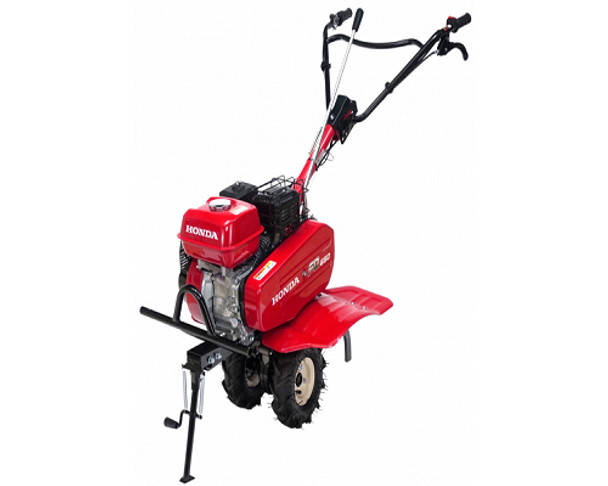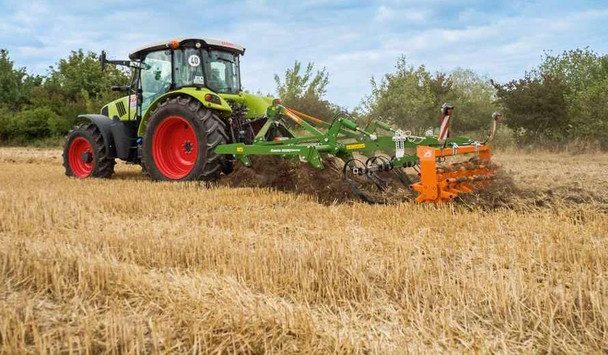Advantages and Disadvantages of using Manual and Industrial Cultivator
The basic idea of soil scratching for weed control is ancient and was done with hoes or mattocks for millennia before cultivators were developed. Cultivators were originally drawn by draft animals (such as horses, mules, or oxen) or were pushed or drawn by people. This brings us to what a cultivator is,the advantages and disadvantages of using a manual and industrial cultivator in the agricultural sector.
Cultivator vertical milling Celli Ranger, Energy, Maxi Kolnag
What is a cultivator?
A cultivator is any of several types of farm implement used for secondary tillage. One sense of the name refers to frames with teeth (also called shanks) that pierce the soil as they are dragged through it linearly. Another sense refers to machines that use rotary motion of disks or teeth to accomplish a similar result. The rotary tiller is a principal example.
Cultivators stir and pulverize the soil, either before planting (to aerate the soil and prepare a smooth, loose seedbed) or after the crop has begun growing (to kill weeds—controlled disturbance of the topsoil close to the crop plants kills the surrounding weeds by uprooting them, burying their leaves to disrupt their photosynthesis, or a combination of both). Unlike a harrow, which disturbs the entire surface of the soil, cultivators are designed to disturb the soil in careful patterns, sparing the crop plants but disrupting the weeds.
Advantages and disadvantages of a manual cultivator
Farming is first of all, hard physical labor, therefore the indisputable advantage of hand cultivators for dacha is minimization of efforts that need to be made in tillage and planting care. Also among advantages this garden tools can distinguish the following:
- ease of use: the only principle of operation is to rest against the ground and push in the right direction;
- no need for maintenance (lubrication, refueling);
- careful cutting of weeds: hand cultivators do not pull them apart between rows, as self-propelled counterparts;
- possibility of processing delicate and hard-to-reach places on the site (flower beds, greenhouses, alpine hills, areas between trees and bushes);
- availability of price.
Of course, the above tools have limitations:
- obsolescence in front of modern self-propelled counterparts;
- the need to replace discs in manual rotary cultivators;
- low productivity - suitable only for tasks on limited, small areas;
- the need to use physical force;
- low efficiency on virgin soil and solid ground.
Now that we know about manual cultivators lets see how beneficial the industrial cultivators are in the agricultural sector;
2 Rows Vegetable Seeder Manual Seed Planter
Advantages of using Industrial Cultivators
To the extent that cultivating is done commercially today (such as in truck farming), it is usually powered by tractors, especially row-crop tractors. Industrial cultivators can vary greatly in size and shape, from 10 feet (3 m) to 80 feet (24 m) wide. Many are equipped with hydraulic wings that fold up to make road travel easier and safer. Different types are used for preparation of fields before planting, and for the control of weeds between row crops.
The cultivator may be an implement trailed after the tractor via a drawbar; mounted on the three-point hitch; or mounted on a frame beneath the tractor. Active cultivator implements are driven by a power take-off shaft. While most cultivators are considered a secondary tillage implement, active cultivators are commonly used for primary tillage in lighter soils instead of plowing. The largest versions available are about 6 m (20 ft) wide, and require a tractor with an excess of 150 horsepower (110 kW) (PTO) to drive them.
By utilization of cultivators and inter-cultivators, soil fertilization and manipulation takes place for the growth of plants and crops. Cultivators are very economical in terms of running costs and complete the ploughing work in small footprint. Time spent on soil preparation and post harvesting preparation greatly reduces in contrast with the manual cultivating methods. Usage of cultivators with tractors in small to large agricultural fields has reduced the resource and money spent on per unit area of land. Increased utilization of cultivators for various agricultural purposes has led the small economic farms to get more profit out of their lands and contributes for overall growth of the farmer’s prosperous life.
Types of manual and industrial cultivators
Field cultivators are used to complete tillage operations in many types of arable crop fields. The main function of the field cultivator is to prepare a proper seedbed for the crop to be planted into, to bury crop residue in the soil (helping to warm the soil before planting), to control weeds, and to mix and incorporate the soil to ensure the growing crop has enough water and nutrients to grow well during the growing season. The implement has many shanks mounted on the underside of a metal frame, and small narrow rods at the rear of the machine that smooth out the soil surface for easier travel later when planting. In most field cultivators, one-to-many hydraulic cylinders raise and lower the implement and control its depth.
Row crop cultivators
The main function of the row crop cultivator is weed control between the rows of an established crop. Row crop cultivators are usually raised and lowered by a three-point hitch and the depth is controlled by gauge wheels.
Sometimes referred to as sweep cultivators, these commonly have two center blades that cut weeds from the roots near the base of the crop and turn over soil, while two rear sweeps further outward than the center blades deal with the center of the row, and can be anywhere from 1 to 36 rows wide.
Garden cultivators
Garden cultivators are small tilling equipment, used in small gardens such as household gardens and small commercial gardens, can provide both primary and secondary tillage. For example, a rotary tiller does both the "plowing" and the "harrowing", preparing a smooth, loose seedbed. It does not provide the row-wise weed control that cultivator teeth would. For that task, there are single-person-pushable toothed cultivators.
Honda Rotary Tiller 5.5 hp FQ650
Rotary tillers
These are a type of cultivator. Rotary tillers are popular with home gardeners who want large vegetable gardens. The garden may be tilled a few times before planting each crop. Rotary tillers may be rented from tool rental centers for single-use applications, such as when planting grass.
A small rotary hoe for domestic gardens was known by the trademark Rototiller and another, made by the Howard Group, who produced a range of rotary tillers, was known as the Rotavator.
Rototiller
The small rototiller is typically propelled forward via a (1–5 horsepower or 0.8–3.5 kilowatts) petrol engine rotating the tines, and does not have powered wheels, though they may have small transport/level control wheel(s). To keep the machine from moving forward too fast, an adjustable tine is usually fixed just behind the blades so that through friction with deeper un-tilled soil, it acts as a brake, slowing the machine and allowing it to pulverize the soils. The slower a rototiller moves forward, the more soil tilth can be obtained. The operator can control the amount of friction/braking action by raising and lowering the handlebars of the tiller. Rototillers often do not have a reverse as such backwards movement towards the operator could cause serious injury. While operating, the rototiller can be pulled backwards to go over areas that were not pulverized enough, but care must be taken to ensure that the operator does not stumble and pull the rototiller on top of himself. Rototilling is much faster than manual tilling, but notoriously difficult to handle and exhausting work, especially in the heavier and higher horsepower models. If the rototiller's blades catch on unseen subsurface objects, such as tree roots and buried garbage, it can cause the rototiller to abruptly and violently move in an unexpected direction.
Rotavator
Unlike the Rototiller, the self-propelled Howard Rotavator is equipped with a gearbox and driven forward, or held back, by its wheels. The gearbox enables the forward speed to be adjusted while the rotational speed of the tine remains constant which enables the operator to easily regulate the extent to which soil is engaged. For a two-wheel tractor rotavator this greatly reduces the workload of the operator as compared to a rototiller. These rotavators are generally more heavy duty, come in higher power (4–18 horsepower or 3–13 kilowatts) with either petrol or diesel engines and can cover much more area per hour. Mini tiller
Mini tillers are a new type of small agricultural tillers or cultivators used by farmers or homeowners. These are also known as power tillers or garden tillers. Compact, powerful and, most importantly, inexpensive, these agricultural rotary tillers are providing alternatives to four-wheel tractors and in the small farmers' fields in developing countries are more economical than four-wheel tractors.
Cultivator Cenio 3000 Special Mounted Amazone
Contact GZ industrial supplies for the best Cultivators which have made the agricultural land soil preparation works simple and less labor intensive. With the implementation of cultivators powered with tractors, ploughing of large land is easy and fast in very less time without having the need for much human effort.
Related Articles
What are Agricultural Machinery
WHERE TO BUY AGRICULTURAL MACHINERY IN NIGERIA
Pumping Solutions for Agriculture: Water Pumps for Farming











